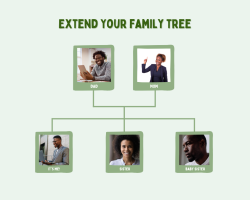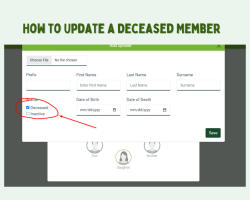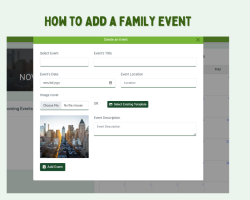The Kamba people are a Bantu ethnic group residing primarily in southeastern Kenya.
They’re one of the largest ethnic communities in the country and have a rich cultural heritage that spans centuries.
They were known for making and selling creative wood carvings and ornaments.
Here is an overview of the Kamba tribe.
Family Structure
The basic unit of the Akamba community was the family (Musyi). The men typically assumed the role of family leaders and actively participated in the community’s economic endeavors.
Meanwhile, women focused on cultivating land to provide sustenance for their families. Additionally, mothers held the responsibility of nurturing children and managing household affairs.
Clans and their Totems
The ‘utui,’ the Akamba name for a clan, varied in size and was grouped into 25 dispersed patrilineal units. They had 14 major clans and 11 minor clans. And this makes a total of 25.
Here are some of the major clans with their totems:
1. Aombe (Mwĩombe)
They are divided into two :
a) Mbaa Mai; b) Mbaa Mululu
Symbol/Totem: The long-tailed monkey
2. Aiîni (Mūiniînî)
Symbol/Totem: Bows and Arrows: Syano na Thyaka.
3. Anzaũnĩ (Mũnzaũnĩ)
Symbol/Totem: The Jackal – Mbĩwa.
4. Anziũnĩ ( Mũnziũ)
Symbol/Totem: Kĩndĩle – a birdLarge clan. The name is from the adjective “nzîu (black)
5. Akĩthumba ( Mukĩ thumba)
Symbol/Totem: Nthwaia– the bushbuck. The founder was Kithumba.
6. Ethanga (Mwĩthanga)
Symbol/Totem: Sand containing iron – Mũthanga
The founder was an iron smith using a certain type of sand –kĩthangathi from a riverbed.
7. Atangwa ( Mũtangwa )
They are divided into four:
a) Mbaa Mũlela; b) Mbaa Kateti; c) Mbaa Mũtheka; Mbaa Mũkuva
Symbol/Totem: The Baboon –Ngũlĩ. Mbaa Mũlela has the hawk Mbolosya as their symbol.
8. Akĩtutu (Mũkĩtutu)
Symbol/Totem:The Hawk – Mbolosya
9. Akĩtondo (Mũkĩtondo)
They are divided into:
a) Mbaa Mbuli and b) Mbaa Nyumba
Symbol/Totem: The Crow – Ngũngũũ
10. Amũumo( Mũmũumo)
Symbol/Totem: The fig tree – Kĩumo
11. Amũũnda ( Mũmũũnda)
They are divided into:
a) Mbaa Mũyethya; b) Mbaa Nzalũ
Aewani (Mũewanĩ)
Symbol/Totem: The Leopard – Ngo
12. Amũtei (Mũmũtei)
Symbol/Totem: The Secretary Bird – Ndei
13. Asii (Mũsii)
Symbol/Totem: The Lion – Mũnyambũ
The Akamba had a decentralized system of government where the man in the family handled everything concerning the family. Issues that affected the whole community, older men who made the council of elders would meet (Mbai) and find a solution.
Subgroups
The Akamba subgroups include Masaku, Kitui, and Mumoni.
Dialects
The Kamba speak the Kamba language (Kikamba) as their mother tongue. Its origin is the Bantu branch of the Niger-Congo language family. The letters ‘f’s, ‘c,’ ‘q,’’ j,’ ‘x,’ and ‘r’ are absent in its alphabet.
Age sets
Unlike other African communities, circumcision among the Akamba did not categorize age sets. Age sets were based on age grades. That is;
- Junior elders (Anake )
- Intermediate elders/medium (Nthele )
- Full elders (Atumia makivalo)
- Senior elders (maithembo)
Naming System
Women named children on an even day -2, 4, 6, 8, or 10 days after birth. Like the Kikuyu, the Akamba people named their children in patrilineal and matrilineal patterns.
The firstborn son was named after the grandfather to the father, and the firstborn girl was named after the grandmother to the father.
They also gave their children names according to what they wished them to be in life, e.g., “Mutongoi” (leader), “Muthui” (rich one), “Ngumbau” (the brave one), and “Musili” (judge).
Occasionally, children were given names that were descriptive of the circumstances under which they were born. .i.e.
- Musyimi -‘syima’ (hunting)
- Kioko (boy) – born in the morning
- Mumbua/Syombua (girl)and Wambua (boy) – time of rain,
- Wayua (girl) – famine
- Nduku (girl) and Mutuku (boy) – born at night
Kinship Names
The Akamba had a strict law that prohibited them from addressing people by their first name. Since the name was mostly those of fathers-in-law or mothers-in-law, it was disrespectful to call out the name.
Marriage/Courtship
The Akamba viewed marriage as an important event in a man’s life. It ensured the continuity of the family kinship ties.
Most marriages in the traditional Kamba were arranged. However, there were instances where the man was allowed to choose his preferred wife.
After a man finds a woman to marry, the groom’s father will meet the bride’s father. If the bride’s father agrees, the bride’s mother is also consulted.
Three goats were then sent to the bride’s parents as a sign of commitment. The suitor’s wealth was considered when the dowry payment was discussed.
The bride price was not ever paid in full. It was to last as long as the relationship between the couple. The bride price was a bull, two cows, and several goats.
A leather rope (mukwa), traditional beer (muratine, a drum of honey (kithembe kya uki wa nzuki), and bananas were among other items for bride price. After the bridewealth was paid, the bride was abducted to her husband’s home.
Polygamy
Traditionally, Polygamy was a practice among the Akamba. To them, it was a sign of wealth and social prestige. Only those rich in the community could afford the bride price for many wives.
‘Maweto’ Marriage
This kind of marriage involved two women marrying each other. Barren women and those who gave birth to girls only were allowed to marry a woman who would then consecutively give birth to children or boys.
Single Mothers
Single mothers among the Akamba redeemed themselves by getting married as second or third wives to a man. A stable family had a man as the head.
Being a single mother in the community meant a lot of disgrace and no one to stand up to for protection and security.
Children were a source of social status and prestige. Hence men who took single mothers earned respect in the community.
Widows
Traditionally, they practiced Levirate marriage which involves the brother of a deceased man marrying his brother’s widow.
Widowers
The Akamba had ‘ghost marriages’ where if a man dies before he is married, the parents arrange for him to be married in absentia so that the family lineage can continue.
This type of union was called ‘kuungamia isyitwa.’ The parents looked for the girl, they proposed, and paid the bride price. She was then taken to her ‘ghost’ husband.
Role of Men and Women in Marriage
Matured men (nthele) in the Akamba community defended the society and brought wealth through sanctioned cattle raids. The women, on the other hand, worked on the farm to supply meals to their families. They also had the role of taking care of the children and other house chores.
Grandparents had a role in teaching and educating the teenagers in the community. Initiated girls were taught domestic duties and how to raise a family, while the boys were taught hunting, herding, and looking after their homes.
Inheritance
The traditional Kamba community practiced inheritance through patrilineal lineage. Women were not allowed to own property unless the husband allocated her land.
She was given this right until she died or married another man. The sons would then take over the inheritance of their father. When the widow has no sons, her husband’s lineage takes over.
Death
The Akamba believed in reincarnation. They believed that when people died, they returned as newborns in the family they departed from.
A child was given a name of an ancestor to mark their reincarnation. Those believed to have reincarnated are named Kasyoka, Musyoka, Nzioka, Nzioki, Musyoki, Nthioki, and Muthoki.
When a person dies, they would be buried or left out in the forest or wilderness. The latter was considered when the area was sparsely populated.
Those who preceded the burial were circumcised men who were elders in the community. Older women took care of burying children.
During mourning, the women wailed and were allowed to express their emotions. Men, on the other hand, were not allowed to show emotions. It was considered a sign of weakness. They spent their mourning time drinking communal beer.
There was a cessation of cultivation, marital relations, and other activities. Children were not allowed to take part in the burial processions. During mourning, there was a pause in marital relations, cultivation, and other ordinary activities.
The funeral took place after a day or two, but mourning would take a month or more. The dead would be buried naked or wrapped in a single cloth. The corpse’s knees are drawn towards the chest. The male was laid on their right side while the woman was on the left side.
A ritual was done to cleanse the homestead after the funeral to avoid a bad omen.
Do you love culture?
Would you love to preserve your family stories? Sign up on the Oret website to create your family tree and preserve your history.
Share our Post







